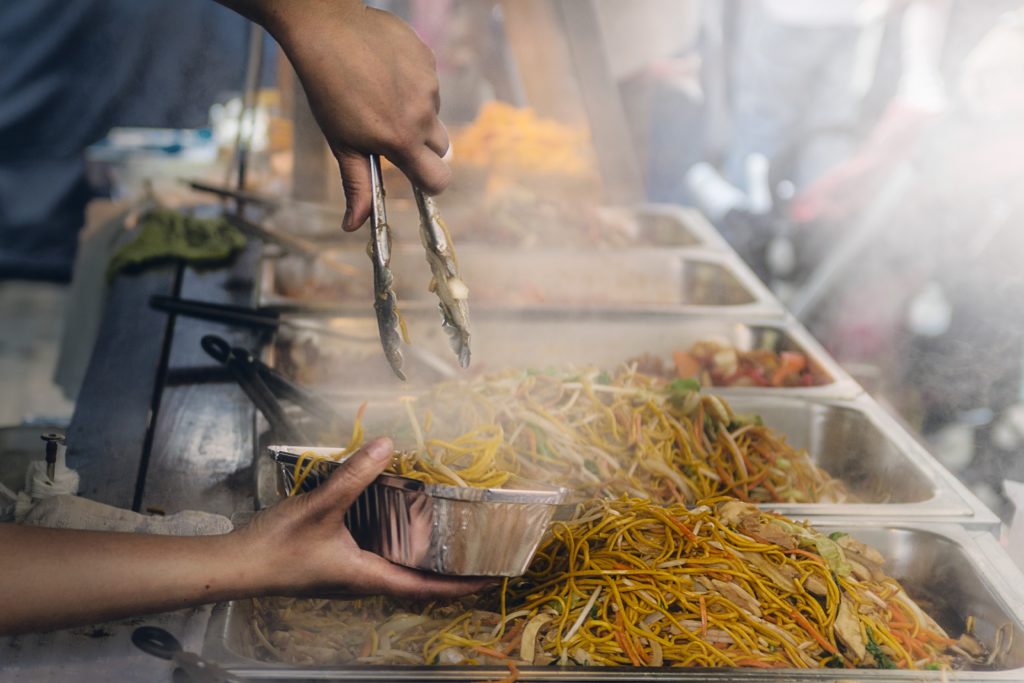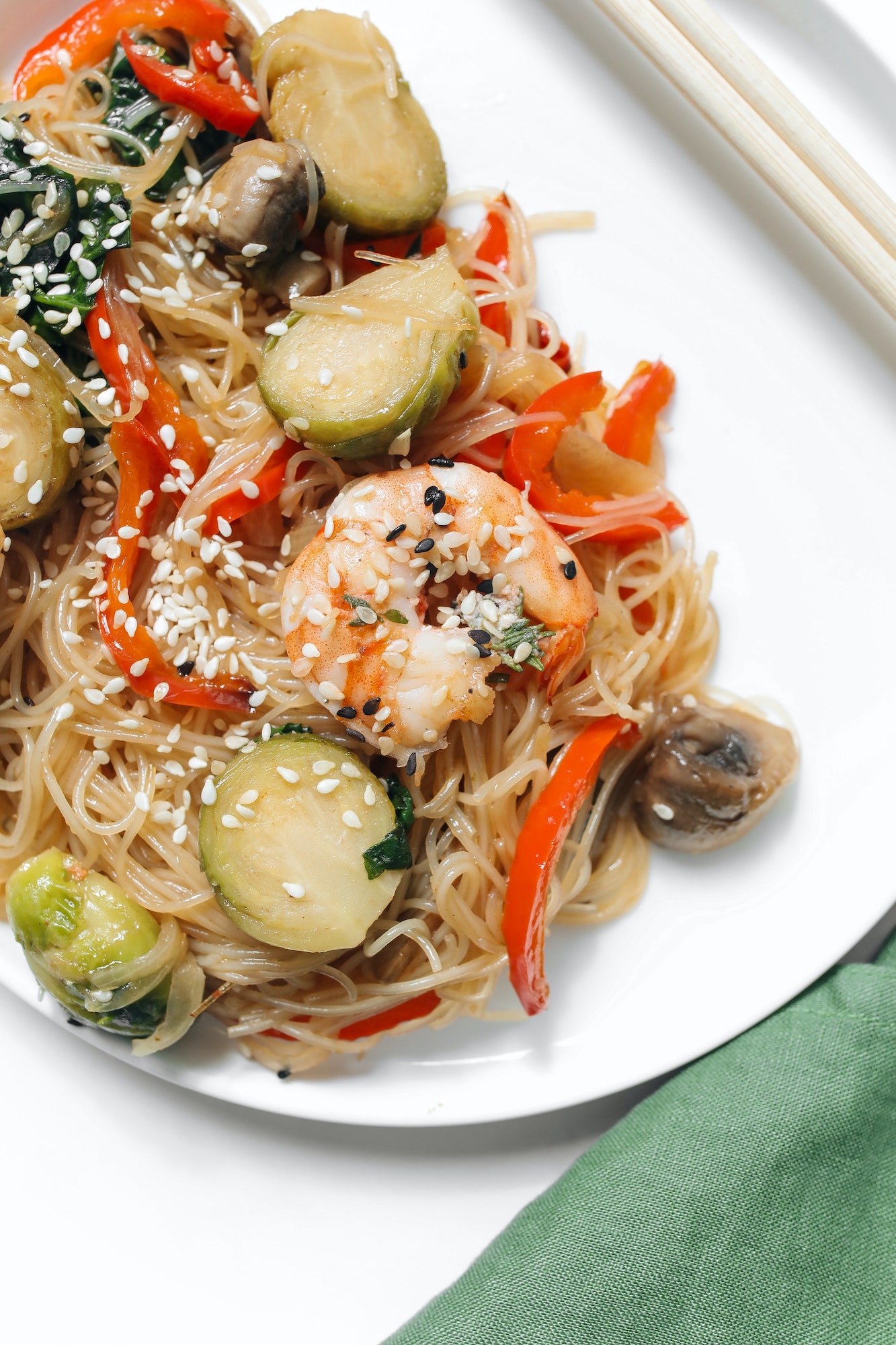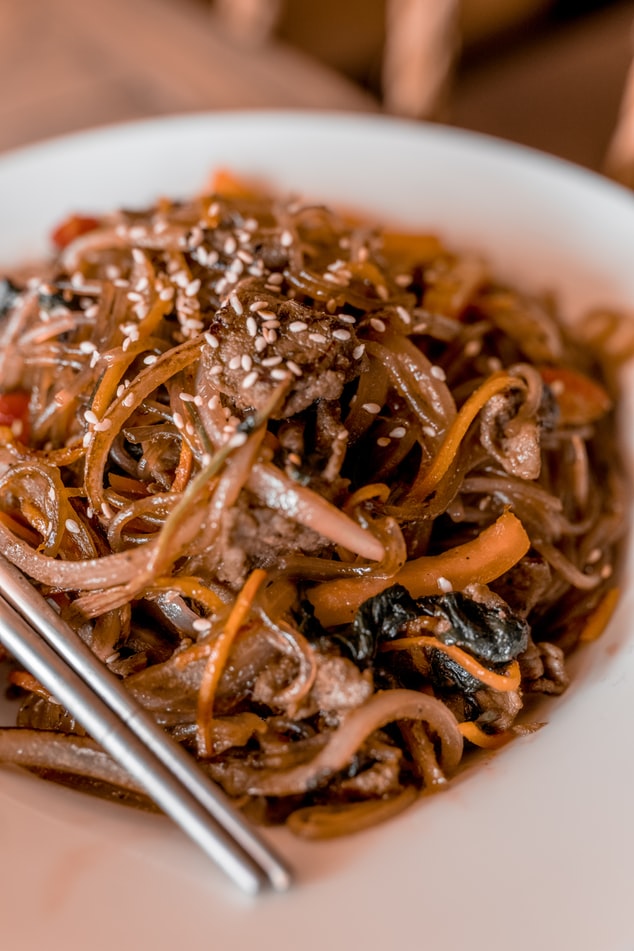If we take a look at the local fiesta table, pancit is just as much of a staple as rice in Filipino celebrations.
From the Hokkien word “pian e sit,” which means something conveniently cooked, noodles came to the country during the Spanish occupation when Chinese vendors sold it to women working in cigar factories. Because they didn’t have time to cook, they patronized these (presumably one of the first) takeout food.
This then led to the opening of roadside eateries (called panciteria) serving pancit to the traveling and working customers. Due to the high demand for convenient food, the noodle dish led to the first-ever restaurant to cater to the working class.

The presence of pancit in almost every celebration, such as birthdays, weddings, and even burials, brought about the notion of pancit giving a person “long life.” But how exactly, aside from its ceremonial symbol of triumph and new beginnings, does pancit sustain life?
The healthier choice
No two noodles are alike. It comes in different shapes, textures, and flavors. To name a few variants that are popular in the Philippines: bihon, canton, sotanghon, and miki. What sets the noodles that are most patronized (rice noodles) here apart from Western pasta is that rice noodles have no gluten, which means people with celiac disease (an autoimmune disease in which eating gluten can damage the stomach and intestines) and gluten intolerance can eat it.
Rice noodles also don’t contain egg as it is made with rice flour and water, making it the most viable noodle option for people who are allergic to eggs or are vegans and vegetarians.
For those following a low-residue diet, particularly those who recently had surgery, chemotherapy, or have an irritation in the digestive tract, rice noodles can be a good option as it is low in fiber, only containing less than a gram per 1/3 serving cup.
When it comes to carbohydrates, rice noodles have a fairly lower carbohydrate count. It has 44 grams of carbohydrates per cup compared to egg noodles’ 60 grams per cup. In terms of calories, there’s little disparity. Rice noodles contain 192 calories per cup while egg noodles holds 200.
Those on a keto diet (characterized by a very low-carbohydrate diet) or Paleo diet (also known as Paleolithic or caveman diet, which means only food acquired from hunting and gathering are allowed to be consumed) need to steer clear of noodles made with any kind of flour.
For those following a low-residue diet, particularly those who recently had surgery, chemotherapy, or have an irritation in the digestive tract, rice noodles can be a good option as it is low in fiber, only containing less than a gram per 1/3 serving cup.

Rice noodles are also rich in manganese (making up 14 percent of the recommended daily allowance [RDA]) an essential mineral that aids metabolism. It regulates blood sugar and decreases inflammation in the body. It also provides 12 percent of the RDA of selenium, which reduces the risk of chronic diseases like cancer. Calcium and phosphorus, which aids in bone health and filter kidney waste, are among the minerals that come with rice noodles as well.
Why incorporate rice noodles in your menu
Looking at the emerging trends of “cleaner” eating, which a lot of health-conscious consumers faithfully follow, how can restaurants harness this particular trend through noodles?
It is known today that the younger generation is more inclined to lifestyle choices that are beneficial for their overall well-being. Studies show that Generation Z (those under 20 years of age) are the most concerned individuals with regard to health and wellness. As they enter the workforce and gain greater purchasing power, it makes sense for food businesses to align their decision-making strategies with this trend in mind and answer the question: What do millennials and Gen Zs want when dining?

Sapporo Noodles, one of the country’s best known noodle brands, offers a wide array of healthy noodle variants, including sotanghon. Also called cellophane or glass noodles, sotanghon is often combined with soup, spring rolls, and stir-fried dishes. And because noodles can be a substitute for rice, it can easily be paired with vegetables, meat, and broth.
These days, more consumers are looking for innovative back-to-basics food. They have shaped the food culture and adopted a more health-oriented perspective. Different diets and food movements keep coming in and are dictating how the foodservice sector should perform. Because of personal preferences and certain health concerns of diners, a restaurant should always be ready with food options for to address these dietary needs.
If a restaurant wants to be inclusive and successful, it has to be able to speak the language of the people it caters to—this means it has to encompass all preferences, lifestyles, and even medical conditions.
A holistic approach in health and nutrition will always ensure that a business retains loyal customers. What some restaurants often overlook is the nutrition behind a dish, focusing instead on aesthetics. However, these considerations have to be imbued into the total package. Healthy food doesn’t necessarily equate to a downgrade in flavor.
As seen in some of the world’s largest fast food chains’ healthier meal alternatives (such as Burger King’s fresh fruits and salads and McDonald’s artisan grilled chicken sandwich), the demand for healthy food cannot be ignored anymore.

Rice noodles can give your menu better food options for customers who favor noodles over rice; even those who are following a strict diet or are dealing with various health concerns can turn to noodles as a viable food choice. Sapporo’s high quality noodles can be a feasible option for a healthier touch to different dishes. Among the popular sotanghon dishes that restaurants can include in their menu are chicken sotanghon, pancit sotanghon guisado (stir-fried sotanghon), and sotanghon with upo (calabash or bottle gourd).
If a restaurant wants to be inclusive and successful in the long run, it has to be able to speak the language of the people it caters to—this means it has to encompass all preferences, lifestyles, and even medical conditions.














































